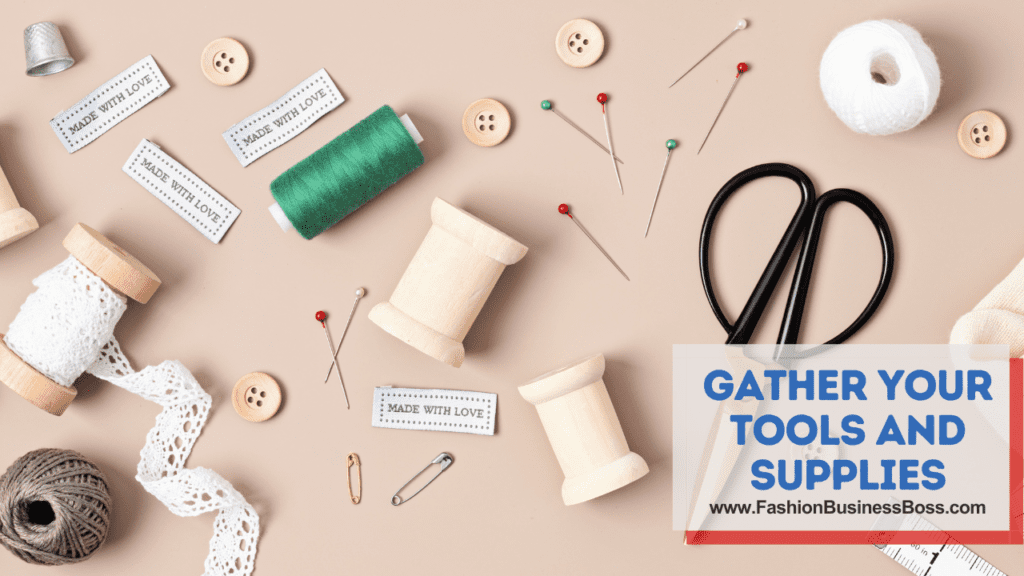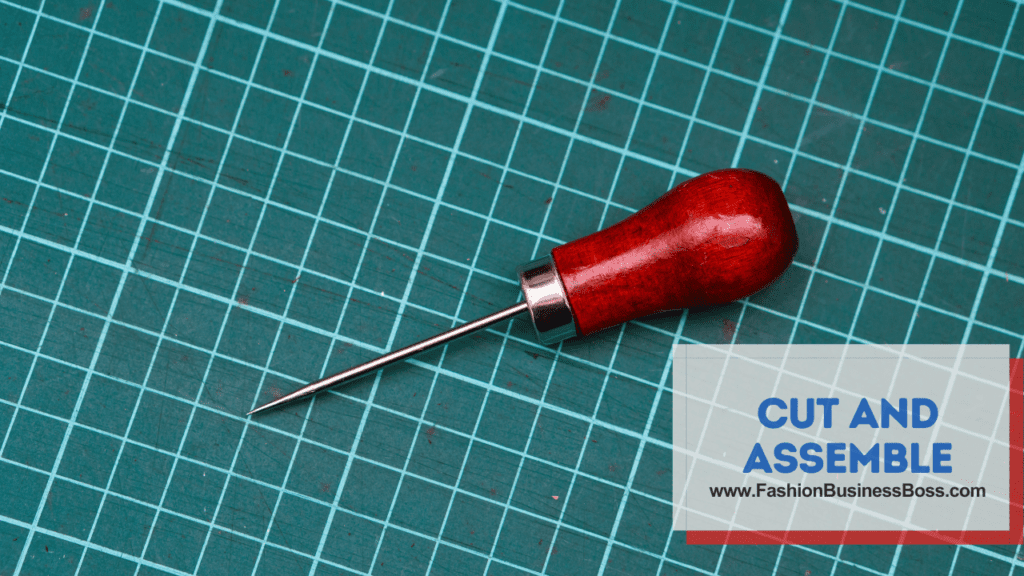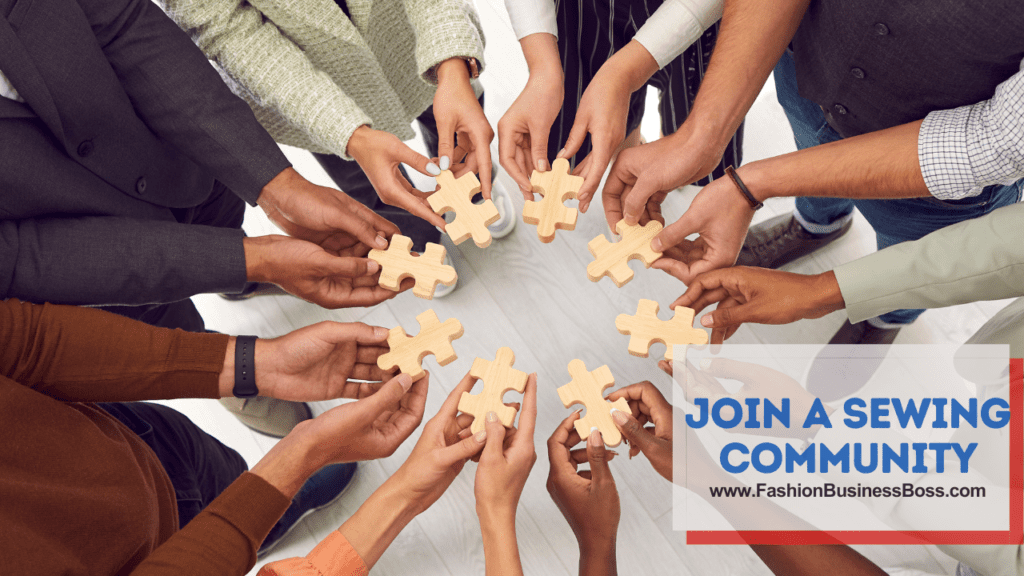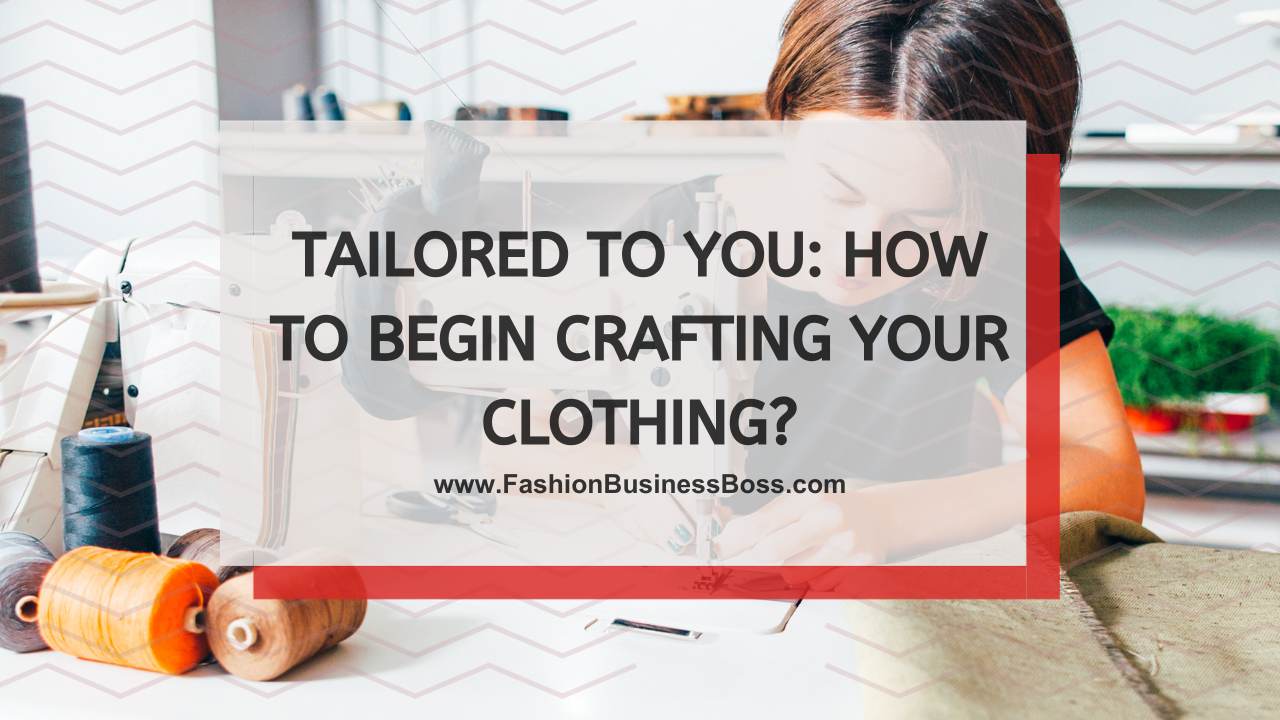Are you tired of scouring clothing stores for the perfect outfit, only to come up empty-handed? Do you have a flair for fashion and a desire to express your unique style? If so, it might be time to consider making your own clothes.
To begin making your own clothes, gather sewing tools, choose simple patterns, and select suitable fabrics. Learn the basics of sewing, take accurate measurements, and don’t forget to practice and customize for a unique touch.
In this article, we’ll take you through the steps to start making your own clothes, even if you’re a complete beginner.
Gather Your Tools and Supplies

To begin your journey into making your own clothes, it’s crucial to gather the necessary tools and supplies. Let’s break it down into what you’ll need.
First and foremost, a sewing machine is a fundamental tool. It’s an investment worth considering, and you can find one that aligns with your budget and skill level. Once you have a machine, select your fabric wisely. If you’re a beginner, opt for user-friendly fabrics like cotton or linen. Ensure that your thread matches the color of your chosen fabric; this will make your stitches less noticeable.
Sharp fabric scissors are indispensable for precise cutting, so investing in a good pair is wise. Patterns serve as your guide. You can either purchase commercial patterns or find free ones online. To ensure accurate sizing, having measuring tools such as a tape measure and rulers on hand is essential.
Lastly, don’t forget about pins and needles. These simple tools are crucial for temporarily holding fabric together before you sew it permanently. With these basic tools and supplies in place, you’re ready to take your first steps into the world of DIY clothing creation.
Read more about: Starting a Clothing Line? These T-Shirts Are Key
Learn the Basics of Sewing
When starting your journey in sewing, it’s crucial to acquaint yourself with the fundamental aspects. If you’re a novice, consider enrolling in a beginner’s sewing class or watching online tutorials. These resources will provide you with valuable knowledge to kickstart your sewing skills.
Begin by understanding the operation of your sewing machine. Learn how to thread it properly, a fundamental step in sewing. You’ll also get to grips with sewing various types of stitches, including straight and zigzag, which are fundamental for different sewing projects.
Furthermore, these learning opportunities will equip you with troubleshooting skills. You’ll be able to identify and address common issues that may arise while sewing. By mastering these basics, you’ll lay a strong foundation for your sewing journey, ensuring that you’re well-prepared to tackle more advanced projects in the future. So, take the time to learn and practice these sewing essentials, and you’ll be on your way to becoming a proficient DIY clothing creator.
Choose Your First Project
Selecting your initial sewing project is a crucial step in your sewing journey. To bolster your confidence, it’s wise to begin with a straightforward project. Consider crafting items like a basic skirt, a tote bag, or a pillowcase. These are excellent choices for beginners because they involve relatively simple sewing techniques and fewer intricate details.
Starting with such uncomplicated projects allows you to gradually familiarize yourself with the sewing process without feeling overwhelmed. As you work on these initial items, you’ll gain valuable experience and build your sewing skills progressively. This incremental approach will help you become more confident in handling more intricate and challenging sewing tasks down the road.
Remember, sewing is a skill that develops with practice and patience. By selecting manageable projects to start, you set yourself up for a smoother learning curve and an enjoyable sewing journey. As you become more adept, you can then confidently venture into more complex garments and creations. So, choose wisely and embark on your sewing adventure with enthusiasm and determination.
Select the Right Fabric

The selection of the appropriate fabric is a critical factor in the outcome of your sewing project. Your choice of fabric can significantly impact the final result. When making this decision, it’s essential to consider three main factors: texture, weight, and stretch, in relation to your design.
First, think about the texture of the fabric. Different fabrics have various textures, from smooth and silky to rough and coarse. Choose a texture that aligns with the look and feel you desire for your project.
Secondly, consider the weight of the fabric. Fabrics come in different weights, ranging from light and airy to heavy and substantial. The weight should match the intended use of the garment or item you’re creating. For instance, lightweight fabrics are suitable for summer clothing, while heavier ones work well for winter garments.
Lastly, think about the stretch of the fabric. Some fabrics have a natural stretch, while others are non-stretch. Your choice should be based on the flexibility and comfort you want in your final product.
Read more about: Starting from Scratch: How to Begin Your Clothing Brand?
Follow a Pattern
Utilizing sewing patterns is akin to having a roadmap for your sewing journey. These patterns provide you with clear directions on how to create a particular garment or item. To make the most of them, it’s vital to follow the instructions meticulously.
Begin by reading through the pattern’s instructions thoroughly. Ensure you understand each step before proceeding, and don’t hesitate to seek assistance or clarification if any part seems unclear. Pay close attention to details like cutting out pattern pieces, marking fabric, and following the specified seam allowances.
As you continue to gain sewing experience, you’ll develop the skill to adapt and modify patterns to suit your personal preferences. This allows you to add your unique touch to your creations, making them truly your own.
Treat sewing patterns as your trusted guides, especially when you’re starting. They provide structure and guidance to help you create beautiful garments and items. With practice, you’ll not only become adept at following patterns but also confident in making adjustments to infuse your creations with your individual style and flair.
Take Accurate Measurements
Taking precise measurements is a fundamental step in sewing, ensuring that your clothing item fits perfectly. Whether you’re creating clothing for yourself or someone else, accuracy is key.
Begin by measuring yourself or the intended wearer with care. Use a flexible measuring tape to record the measurements for various body parts, such as the bust, waist, hips, and inseam. It’s essential to be as accurate as possible, as even small discrepancies can affect the fit of the garment.
Also, consult the pattern’s size guide. Patterns typically provide a range of sizes, and you should select the one that most closely matches your measurements. If necessary, you can make adjustments to the pattern to achieve a better fit, such as blending sizes or adding extra length.
Hence, taking accurate measurements is the foundation for creating clothing that fits comfortably and looks great. By combining precise personal measurements with guidance from the pattern’s size chart, you’ll be well on your way to sewing garments that are tailor-made to your or your intended wearer’s unique proportions.
Cut and Assemble

The process of cutting and assembling your fabric pieces is a critical step in creating your clothing or project. It’s essential to approach this stage with care and precision.
Start by laying out your fabric pieces on a flat surface according to the pattern’s instructions. Use sharp fabric scissors to cut along the designated lines, ensuring accuracy in each cut. Take your time during this step to avoid mistakes.
Once you have your fabric pieces cut, it’s time to assemble them. Pin the pieces together as indicated in the pattern. This is crucial for holding everything in place while you sew. When sewing, use a straight stitch and maintain an even seam. Keep your stitches consistent and follow the pattern’s guidelines closely.
Patience is key during this phase. Sewing accurately and neatly will contribute to the overall quality of your project. Rushing through can lead to errors and affect the final outcome.
Read more about: Starting from Scratch: The Essentials for Launching Your Clothing Line
Practice
Improving your sewing skills is a gradual process that hinges on practice. Similar to any skill, sewing becomes better with repetition and experience. It’s important not to become disheartened by mistakes, as they are natural occurrences in the learning journey.
Each time you embark on a sewing project, view it as an opportunity to enhance your abilities. Mistakes are simply chances to learn and grow. They provide insights into areas where you can improve and make adjustments for future endeavors.
Remember, even experienced sewers started as beginners. The key is to persevere and continue sewing regularly. Over time, you’ll find that your skills become more refined, and you become more confident in handling various sewing techniques and challenges.
The path to becoming a skilled sewer involves consistent practice and a willingness to learn from mistakes. Embrace each project as a chance to expand your knowledge and abilities. With dedication and patience, you’ll witness noticeable progress in your sewing skills and the quality of your creations.
Experiment and Customize
After you’ve become proficient in the fundamental sewing techniques, it’s a great time to explore and personalize your sewing projects. This phase allows you to stretch your creative muscles and make your creations distinctively your own.
Begin by experimenting with various types of fabrics, patterns, and designs. You can choose fabrics with different textures, colors, and patterns to give your projects a unique touch. Likewise, exploring diverse sewing patterns can open up new possibilities for your creations.
Don’t hesitate to add special touches to your items. You can embellish your creations with embroidery, appliqué, or other decorative elements to make them stand out. These details can infuse personality and character into your work, making each piece one-of-a-kind.
Remember, this stage is about self-expression and creativity. It’s an opportunity to explore your sewing skills further and discover your unique style. So, once you’ve mastered the basics, embrace the freedom to experiment and customize your sewing projects to your heart’s content. Your creations will reflect your individuality and creativity, making them truly special.
Join a Sewing Community

Exploring the world of sewing can be even more enjoyable when you connect with fellow enthusiasts. One way to do this is by becoming part of a sewing community, either in your local area or online.
Local sewing clubs offer a great opportunity to meet and learn from experienced sewists face-to-face. You can share ideas, seek advice, and even collaborate on projects. These clubs often organize workshops and events, enriching your sewing journey.
If attending in-person gatherings is challenging, online sewing communities are equally valuable. Platforms and forums dedicated to sewing are brimming with like-minded individuals who are eager to share their knowledge and insights. You can engage in discussions, ask questions, and gain inspiration from the projects of others.
By joining such communities, you open up a world of learning and inspiration. Interacting with fellow sewers can provide a sense of camaraderie and encouragement as you progress in your sewing skills. So, whether it’s in person or online, consider becoming part of a sewing community to enhance your sewing experience and broaden your horizons in this creative craft.
Read more about: Starting My Own Clothing Brand: Fashioning Dreams into Wardrobes
Conclusion
Starting to make your own clothes is a journey filled with creativity and self-expression. With the right tools, patience, and a willingness to learn, you can create garments that reflect your personal style and fit you perfectly. Remember, every stitch you make is a step toward mastering the art of clothing creation.
Frequently Asked Questions

Q: How can one choose the right sewing machine for beginners?
A: Beginners can choose an appropriate sewing machine by looking for models with user-friendly features, adjustable settings, and reliable online support. Brands such as Singer and Brother offer suitable options.
Q: Is it possible to create clothing without prior sewing experience?
A: Yes, it is feasible. Novices can begin with uncomplicated projects, follow patterns meticulously, and make use of online tutorials. Practice and persistence will enhance sewing skills over time.
Q: Where can free sewing patterns be found?
A: Free sewing patterns are available on websites like Pinterest, Craftsy, and blogs of independent pattern designers. Local libraries and sewing communities often share patterns as well.
Q: What are the essential sewing tools apart from a sewing machine?
A: Essential sewing tools include fabric, thread, scissors, measuring tools, pins, and needles. These fundamental items are indispensable for sewing projects.
Q: What are some common mistakes to avoid when starting to make your own clothes?
A: Common mistakes to avoid when starting to make your own clothes include not pre-washing fabric, neglecting to take accurate measurements, rushing through projects, and not properly securing seams. Patience and attention to detail can help you steer clear of these errors.
To learn more about starting your own clothing business, check out my startup documents here.
Please note that the contents of this blog are for informational and entertainment purposes only and should not be construed as legal advice. Any action taken based on the information provided in this blog is solely at your own risk. Additionally, all images used in this blog are generated under the CC0 license of Creative Commons, which means they are free to use for any purpose without attribution.

Meet Shawn Chun: Entrepreneur and Fashion Business Fan.
I’m a happy individual who happens to be an entrepreneur. I have owned several types of businesses in my life from a coffee shop to an import and export business to an online review business plus a few more and now I create online resources for those interested in starting new ventures. It’s demanding work but I love it. I do it for those passionate about their business and their goals. That’s why when I meet a designer or boutique owner at a craft fair, farmers market, retail location or anywhere else I see myself. I know how hard the struggle is to retain clients, find good employees and keep the business growing all while trying to stay competitive.
That’s why I created Fashion Business Boss: I want to help fashion business owners like you build a thriving business that brings you endless joy and supports your ideal lifestyle.

